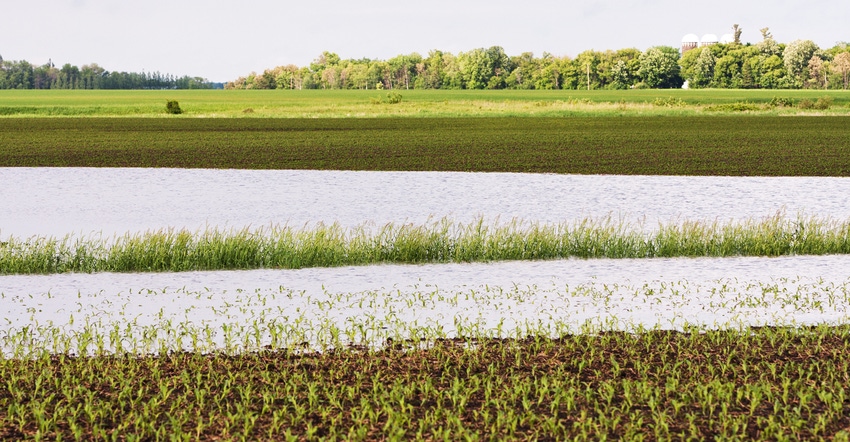May 6, 2022

The year 2012 is remembered by many Minnesota farmers for the widespread drought.
The statewide-measured Palmer Drought Index was showing moderate to extreme drought across the state for all 12 months of the year. By August, the USDA had declared 67 Minnesota counties eligible for some form of drought disaster relief. Water use restrictions were in place in a number of municipalities, while irrigation permits were suspended in some areas as well.
However, June of that year also brought extreme rainfall to some parts of the state, causing FEMA (the Federal Emergency Management Agency) to declare 11 counties eligible for flood disaster relief. These conditions obviously produced wide disparity in agricultural fields with respect to moisture conditions and crop damage. Farmers witnessed reduced crop yields both due to drought and flooding — and in some cases, within the same county.
June 2012 was remarkable for the wide variation in rainfall.
The June rainfall pattern delivered less-than-normal amounts to northwestern, west-central, central, southwestern and southeastern counties, where many climate observers reported monthly totals that were 1.5 to 3.5 inches below normal. Moisture stress on crops was evident in some fields because of the rainfall deficiency combined with the greater-than-normal temperatures. In the northern Red River Valley, observers in Kittson County reported less than 2 inches of rainfall, while in southwestern Minnesota, many observers reported less than 1.5 inches of rainfall for the month. Lamberton in Redwood County reported just 1.26 inches of rain for the month, the fourth-driest June in history. In these areas of the state, drought stress was evident in both cornfields and wheat fields.
Flash flooding to the east
Meanwhile in southeastern Minnesota, strong and slow-moving thunderstorms brought flash flooding over June 14-15, delivering 5 to 8 inches of rainfall to portions of Goodhue and Dakota counties which produced widespread flooding on the Cannon River. These counties received flood disaster assistance from FEMA later in the summer. The flash flooding brought monthly rainfall totals for some areas to 13 to 14 inches; while further south in Fillmore County, less than 2 inches of total rainfall for the month was observed.
A second flash flood over June 19-20 occurred in northeastern Minnesota, delivering 8 to 10 inches of rainfall to parts of Carlton, St Louis and Lake counties. Widespread damage reports included flooded highways, submerged bridges, washed-out culverts and massive soil erosion.
An all-time record flood crest was reported on the St Louis River. Some observers reported 10 to 14 inches of rainfall for the month, while some areas north of the storm reported less than 3 inches of rainfall for June.
By August of summer 2012, some Minnesota families who live in Dakota, Goodhue, Scott, Sibley, Carlton, St Louis and Aitkin counties were eligible for federal disaster assistance and low-cost loans for both drought disaster and flood disaster. These conditions, produced by such widespread variation in rainfall, were absolutely unique in Minnesota’s climate history.
Seeley is an Extension professor emeritus of meteorology and climatology at the University of Minnesota.
About the Author(s)
You May Also Like




